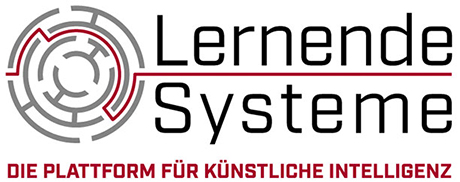Detecting anomalies in plastics manufacturing
Real precision is required in the manufacture of plastic products. The problem: Serious production errors are often only noticed late and can lead to high production costs. With the help of partners, the medium-sized company Wandel Packaging Group Blow Moulding GmbH has developed an AI-based process that immediately detects anomalies in the production process and immediately informs the machine operators.
Wandel Packaging Group Blow Moulding GmbH manufactures around 25 million plastic products a year. The medium-sized company specializes in plastic canisters for hazardous goods and produces these in versions between 2 and 30 liters. Production places high demands on quality and requires stable processes. This applies in particular to the process for manufacturing hollow bodies - known as extrusion blow molding.
Errors or deviations in production here lead to rejects that cannot be recorded with piece-by-piece accuracy. If a serious production error occurs during a shift, it is usually only noticed at a late stage. This can result in high costs - for production downtimes of incorrectly parameterized machines, their diagnosis and repair, and subsequently for the recycling of the faulty production.
To ensure the quality of production, Wandel Packaging Group Blow Molding GmbH relies on artificial intelligence. Through the "Digital in NRW" competence center, the medium-sized company launched a joint project with Fraunhofer IOSB-INA in Lemgo. The institute evaluated an AI-based monitoring process for use at Wandel Packaging Group Blow Moulding GmbH. The most important goal was to identify those signals that have the highest influence on a detected anomaly. The procedure was trained on the basis of recorded machine data from the medium-sized company. In the process, it was ensured that the machine functioned faultlessly during the recorded period.
Intelligent condition monitoring
From a large number of signals such as temperatures in the material feed, pressures in the mold and speeds, the normal behavior was first described. Subsequently, new, previously unknown data points could be compared with this model by means of a mathematical distance calculation.
One goal was to generate a low number of false alarms and thus achieve high accuracy. Another requirement: The condition monitoring system must be able to clearly identify those signals and machine components that have led to the anomaly. This allows a machine operator to quickly locate the faulty components and assess the severity of the fault.
Once this model has been described, it can be stored and deployed as the core of the AI system on a single-board computer, for example. The AI system is thus physically connected to the production line. It has a separate data interface to receive live data from the production machine. It also supports various visualization options such as signal column systems, a traffic light system on a monitoring monitor, mobile notifications or data export to a SCADA system.
Roman Preis, Energy and Process Manager at Wandel Packaging Group Blow Molding GmbH, sums up: "It is important to determine from the process data what influence they have on the quality of our products. Of over 100 parameters, probably only five to ten are relevant."
Application facts
Manufacturing Industry
- Quality ControlIntelligent Sensor Technology
Logistics [Inter- and Intralogistics]
Research and Development [R&D]
Wandel Packaging Group Blow Moulding GmbH
SME
Website
Fraunhofer-Institut für Industrielle Automation IOSB-INA
